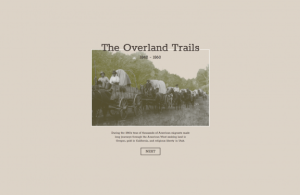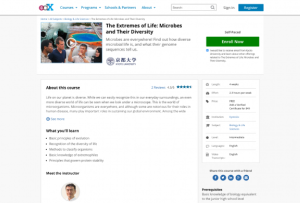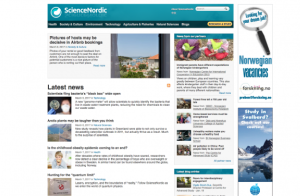The bottom of the Internet Scout Report is probably truncated and you may be able to expand it. Several items in this edition may be of interest. You can get your own copy every other Friday by signing up. Put "Internet Scout" in Google or Bing or Duckduckgo and go to the site. The tools section at the end mentions "Ghost Browser" and "Pixabay", tools which address the need or use of multiple browsers to keep open multiple sites like social ones (Facebook, Twitter) and search for and use of images and video clips for presentations and such.
Bill
---------- Forwarded message ----------
From: scout@scout.wisc.edu <scout@scout.wisc.edu>
Date: Fri, Mar 10, 2017 at 11:21 AM
Subject: The Scout Report -- Volume 23, Number 10
--

From: scout@scout.wisc.edu <scout@scout.wisc.edu>
Date: Fri, Mar 10, 2017 at 11:21 AM
Subject: The Scout Report -- Volume 23, Number 10
 |
March 10, 2017
Volume 23, Number 10 |
Research and Education | General Interest |
Network Tools | In the News |
If you would like to make a tax-deductible contribution to support The Scout Report and the work of Internet Scout, please visit our donation page.
Research and EducationBack to Top | |
 | |
 | |
 | |
 | |
 | |
 | |
 | |
 | |
General InterestBack to Top | |
 | |
 | |
 | |
 | |
 | |
 | |
 | |
 | |
Network ToolsBack to Top | |
 | |
 | |
In the NewsBack to Top | |
Ancient Dental Plaque Provides a Glimpse into Early Medicine and the Original Paleolithic Diet
| |
Neanderthal Dental Plaque Shows What a Paleo Diet Really Looks Like
https://www.theatlantic.com/
Neanderthal dental tartar reveals plant-based diet - and drugs
https://www.theguardian.com/
Dental Plaque DNA Opens New Window on Neanderthal Life-Ways
http://popular-archaeology.
Neanderthals Were People, Too
https://www.nytimes.com/2017/
NOVA: A Neanderthal Burial
http://www.pbs.org/video/
Human Family Tree
http://humanorigins.si.edu/
The Paleo Diet, popularized by Loren Cordain in a 2002 book of the same title, purports to help people lose weight by encouraging them to imitate the diet of Paleolithic humans. How well does this diet actually resemble what our prehistoric ancestors ate? An international team of researchers, led by the University of Adelaide's Center for Ancient DNA, has recently uncovered new insights into that question through a surprising source: Neanderthal dental plaque. The team examined the plaque of five Neanderthals skulls, ranging in age from 42,000 to 50,000 years old, found at two different cave sites: Spy in Belgium and El Sidron in Spain. Microbiologist Laura Weyrich, the study's lead author, explained, "Dental plaque traps microorganisms that lived in the mouth and pathogens found in the respiratory and gastrointestinal tract, as well as bits of food stuck in the teeth - preserving the DNA for thousands of years." By sequencing and examining this DNA, the research team inferred that Neanderthal diets likely varied widely by region. While Spy Cave Neanderthals ate meat (likely from wild rhinos and sheep), those in El Sidron had a vegetarian diet consisting of pine nuts, mushrooms, and tree bark. In short, as Dr. Weyrich puts it, "The true paleo diet is eating whatever's out there in the environment." [MMB]
To learn more about this discovery, the first three links take readers to articles from The Atlantic, The Guardian, and Popular Archeology. These articles contain links to the original research paper, published in Nature earlier this week, for those interested in reading the original study in full. The fourth link takes readers to a long form feature by Jon Mooallem in The New York Times earlier this year. In this piece, Mooallem explores the history of research into the Neanderthal and how this early human ancestor came to be (inaccurately) maligned as "a slow-witted lout." The fifth link, a 2013 NOVA documentary about Neanderthal burial practices, offers further clues about the lifestyle and rituals of the Neanderthal. The final link takes visitors to an interactive Human Family Tree, courtesy the Smithsonian National Museum of Natural History. Here visitors can explore six million years of human evolution and learn more about major prehistoric ancestors, including Neanderthals.
| |
--